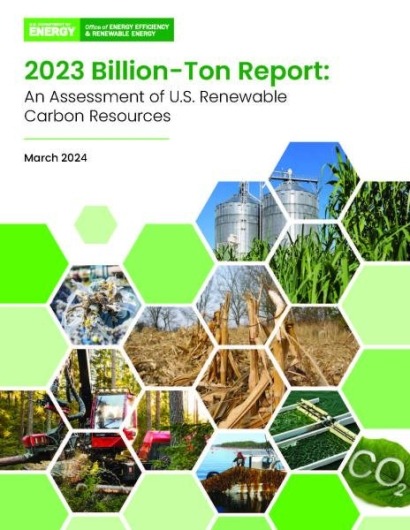
“Boosting clean energy solutions like biomass is critical to achieving long-term national decarbonization goals and is a key component of President Biden's agenda to deliver new economic opportunities across the country while addressing the climate crisis,” said the DOE in a statement.
"President Biden is dedicated to building a thriving bioeconomy that benefits all Americans and ensures that everyone, from farmers and scientists to healthcare professionals and engineers, can play a leading role in our clean energy future," said US Energy Secretary, Jennifer Granholm, at the presentation of the report.
"The Billion-Ton report shows that the United States is poised to lead the world in the emerging renewable biomass industry, opening exciting economic opportunities for farming and rural communities and helping advance the sustainable fuels we need to reduce harmful emissions. and create healthier communities across the country,” she added.the US currently uses some 342 million tons of biomass to satisfy 5% of the country's annual energy
The US currently uses some 342 million tons of biomass to satisfy 5% of the country's annual energy demand. According to the report, production can be increased by about 60 billion gallons of low-greenhouse gas liquid fuels, while still meeting projected demand for food, feed, fiber, conventional forest products and exports.
DOE estimates that available but currently unused biomass resources can add an additional 350 million tons of biomass per year above current uses and double the bioeconomy. Energy crops can provide another 400 million tons of additional biomass. Other technological innovations could lead to evolving and emerging resources that represent additional biomass potential.
The BT23 report analyzes the biomass production capacity of approximately 60 resources, several of which have never been subject to an assessment. These include winter oilseed crops, trees and brush harvested from forests to prevent forest fires, macroalgae (such as those grown in ocean farms), and carbon dioxide from industrial plants.
The report concludes that the wide dispersion and variety of these resources will ensure that the benefits of expanded biomass production extend to both rural and urban areas. Additionally, the analysis ensures sustainable outcomes by taking into account potential risks to soil, air and water quality, water availability, and the imperative to protect America's forests and biodiversity.
The US aviation industry has set the goal of reducing SAF lifecycle greenhouse gas emissions by 50% compared to conventional fuel, while the Clean Fuels goal & Products Energy Earthshot™ is to decarbonize the chemical and fuel industry through alternative sources.
The BT23 report was prepared by Oak Ridge National Laboratory on behalf of the DOE Bioenergy Technologies Office and reflects contributions and reviews from multiple federal agencies, national laboratories, universities, and industry stakeholders.

